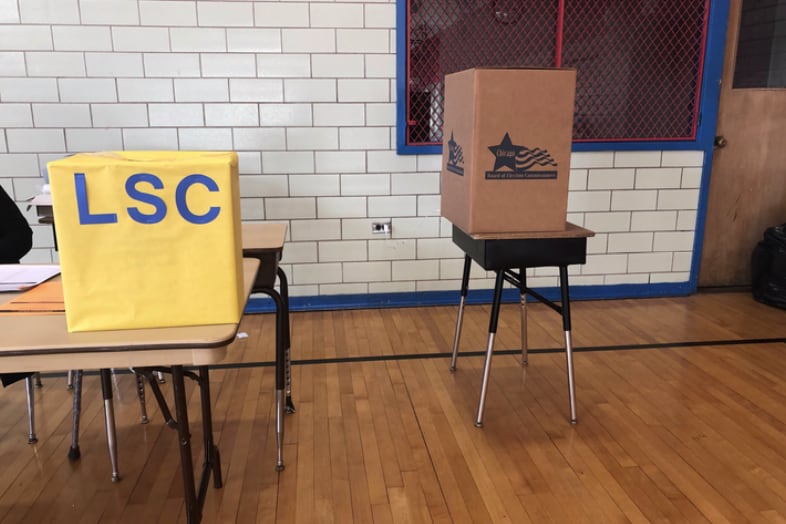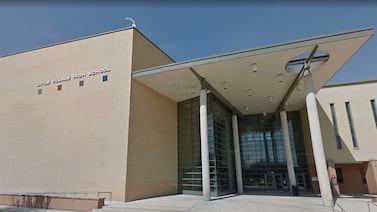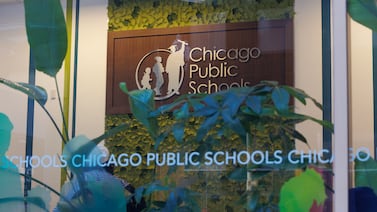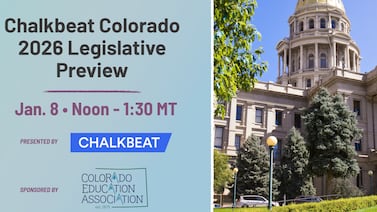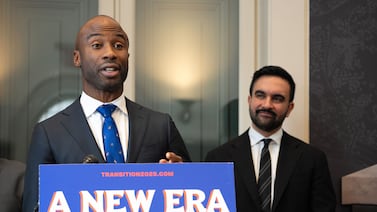Chicago Public Schools saw its biggest overall voter turnout in a decade for the Local School Councils election this spring, but more than 1,400 seats — mostly at South and West Side schools — remain unfilled, according to data obtained by Chalkbeat.
Across CPS, 1,408 seats remained empty as of Aug. 5, with more than half of the unfilled positions designated for parents. Students, who were the largest voting bloc in the spring election, accounted for 239 vacant seats, followed by community representatives with 212 empty seats, according to data Chalkbeat obtained through a records request. The remaining vacancies were among school staff.
These mini-school boards have been a fixture of Chicago schools for more than three decades, putting school-level decisions in the hands of parents, students, and staff. But as Chicago moves toward a fully elected school board by 2027, it’s not clear what role the hyperlocal governing bodies will play.
Natasha Erskine, who holds LSC training workshops independent of the district through parent advocacy group Raise Your Hand, said it is important to strengthen community participation in LSCs and reclaim parent and community governing power at schools.
“We see this as a critical organizing moment,” Erskine added, “We don’t know what we don’t know about the relationship between LSCs and elected boards —we’ve never had that in the city of Chicago.”
Local School Councils have at least 12 seats. At more than 100 schools, 40% of those seats are unfilled, data shows. About 24 schools did not garner enough applicants to meet quorum and did not hold elections in the spring, according to the district.
South and West Side schools have the highest number of unfilled seats. Garfield Park, Little Village, New City, Englewood, Roseland, Grand Crossing, and Chatham had the highest overall total number of vacancies across schools within each neighborhood, data shows.
Garfield Park has an average of about five vacancies per school, while Little Village and New City both averaged almost four vacancies per school in their neighborhood.
It’s still possible for people interested in being on an LSC to fill these vacant seats. Interested parents and community members are asked to file nomination forms and participate in an interview or presentation during an LSC meeting. Afterwards, LSC members will vote on whether to appoint a candidate to a vacant seat on the council.
In 2021, the Illinois Legislature revised quorum requirements to make it easier for schools to fill vacancies. If the number of members fall below seven because of vacancies, four members are allowed to vote to fill outstanding vacancies.
Erskine attributes the vacancies to barriers such as accessing applications and a lack of information around LSC meetings.
Parents and community members aren’t running at schools where there’s been an “erasure of the LSC” and parents may not even know when meetings are being held, Erskine said.
Information isn’t getting to parents and community members and apathy is setting in, she added.
Instead of relying simply on individual administrators to distribute LSC information, the district should be doing more such as robocalls and emails to ensure information on LSC meetings and elections is readily available to parents and community members, Erskine said.
Local School Councils, a facet of Chicago school governance since the first election in 1989, are elected every two years. The councils vote on the annual school budget, approve the school academic plan, and select and evaluate principals.
The councils are traditionally made up of the school’s principal, six parents, two community members, two teachers, one non-teaching staff, and one to three students. This year, for the first time in the district’s history, elementary students in the sixth grade were eligible to serve one-year terms on their school’s LSC.
“LSCs serve as an important vehicle for participatory democracy, providing a wide variety of stakeholders an opportunity to make important decisions about how students in their communities will be educated,” the district said in an emailed statement.
The Office of Local School Council Relations will work with principals and a school’s LSC to fill vacancies in the fall. Staff and student vacancies will also be filled through an election process or a poll of their peers. The district said it would raise awareness about filling remaining LSC vacancies.
During a speech Wednesday at City Club Chicago, CEO Pedro Martinez said the district saw “the highest engagement in more than a decade for both in our LSC elections for both candidates running for LSC and our parents community members coming out to cast their votes.”
More than 110,700 people voted for council candidates at nearly 500 schools this spring. That’s more than three times as many votes cast than in 2020, when about 35,066 people voted.
The largest turnout was among students, who cast 71,142 votes – a dramatic increase from the 2020 election when only 4,869 students cast a ballot, data shows.
But parent and community voters only saw marginal increases of 2 to 3%, figures show. About 17,065 parents cast a vote in the spring election, compared with 16,802 votes in 2020. Parent voters turned out at higher levels prior to the pandemic when 28,888 cast votes in 2018.
The district has struggled with tepid participation in the last decade. After the 2020 election, about 900 seats remained unfilled — a situation that prompted a wave of appointments by administrators and members from local school councils.
A few days shy of the district’s deadline this March, only 722 candidate applications had been submitted for 6,239 total positions on councils across 509 schools. About 307 schools had no candidates for open positions.
The district ultimately received enough candidates to reach a quorum at 485 of the 509 schools.
The district hosted 100 engagement sessions to promote candidacy and elections. In all, 6,149 parents, students, and community members ran for seats during the April election, compared with 5,910 people running for seats in 2020. The district added more seats for student representatives.
Mauricio Peña is a reporter for Chalkbeat Chicago, covering K-12 schools. Contact Mauricio at mpena@chalkbeat.org.

